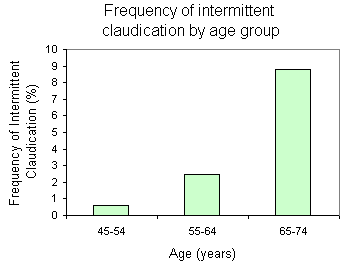Epidemiology
More recently NICE stated that ".. about 20% of people aged over 60 years have some degree of peripheral arterial disease...incidence is also high in people who smoke, people with diabetes and people with coronary artery disease..in most people with intermittent claudication the symptoms remain stable, but approximately 20% will develop increasingly severe symptoms with the development of critical limb ischaemia.." Reference: |
Related pages
Create an account to add page annotations
Annotations allow you to add information to this page that would be handy to have on hand during a consultation. E.g. a website or number. This information will always show when you visit this page.
